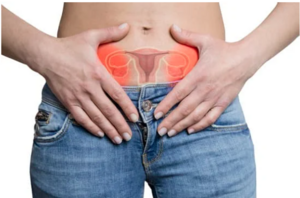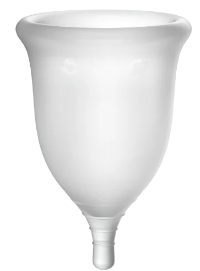Facts About The Menstruation Cycle
Your Guide to The
Facts About The Menstruation Cycle :
Menstrual Problems: Causes and Treatments
Menstrual problems are a common issue among women of all ages. These problems can range from mild discomfort to severe pain and can have a significant impact aon a woman’s daily life. Some of the most common menstrual problems include painful periods, heavy periods, irregular menstrual periods, and absent menstrual periods. In this article I’ll give you all of the facts about the menstruation cycle.
 Painful periods, also known as dysmenorrhea, are a common problem for many women. This type of menstrual problem is characterized by cramping and pain in the lower abdomen, back, and thighs. Heavy periods, or menorrhagia, can also be a significant problem for women. This type of menstrual problem is characterized by excessive bleeding during a woman’s period, which can lead to anemia and other health problems.
Painful periods, also known as dysmenorrhea, are a common problem for many women. This type of menstrual problem is characterized by cramping and pain in the lower abdomen, back, and thighs. Heavy periods, or menorrhagia, can also be a significant problem for women. This type of menstrual problem is characterized by excessive bleeding during a woman’s period, which can lead to anemia and other health problems.
Irregular menstrual periods, or oligomenorrhea, can also be a common problem for women. This type of menstrual problem is characterized by a short menstrual cycle (periods that are either too short or too long), or that occur irregularly. Finally, absent periods, or amenorrhea, can be a sign of a serious health problem and should be evaluated by a healthcare provider. Understanding the causes and treatments for menstrual problems can help women manage their symptoms and improve their quality of life.
Causes of Menstrual Problems
Menstrual problems can be caused by a variety of factors, including physical and hormonal causes. Here are some of the most common causes of menstrual problems:Physical causes of menstrual problems can include:
- Weight Gain
- Anemia: Low iron levels can cause heavy or prolonged periods.
- Liver problems: Liver disease can affect the metabolism of hormones, leading to menstrual irregularities.
- Vitamin D deficiency: Low levels of vitamin D have been linked to menstrual irregularities.
- Weight gain: Excess weight can cause hormonal imbalances, leading to irregular periods.
Hormonal Causes

Hormonal causes of menstrual problems can include:
- Polycystic Ovary Syndrome: PCOS is a hormonal disorder that can cause irregular periods, as well as other symptoms such as acne and weight gain.
- Thyroid problems: An overactive or underactive thyroid can cause menstrual irregularities.
- Premenstrual syndrome (PMS): PMS can cause a range of physical and emotional symptoms in the days leading up to a period.
It’s important to note that menstrual problems can also be inherited, meaning that they run in families. If you have a family history of menstrual problems, it’s a good idea to talk to your doctor about your options for managing your symptoms.
Overall, there are many different factors that can contribute to menstrual problems. If you are experiencing irregular periods or other menstrual symptoms, it’s important to talk to your doctor to determine the underlying cause and develop a treatment plan that works for you.
RELATED ARTICLES:
Female Infertility: Causes and Cures
The Keto Diet For Beginners
Cannot Get To Sleep
Womens Breast Health Information
Facts About The Menstruation Cycle –
Menstrual Problems
Menstrual problems can cause a variety of symptoms that can be uncomfortable and disruptive to daily life. Symptoms can vary depending on the type of menstrual problem, but some common and less common symptoms are discussed below.

- Painful menstrual cramps
- Heavy bleeding during menstruation
- Irregular menstrual cycles
- Absent menstruation
- Spotting between periods
- Mood swings
- Breast tenderness
- Bloating
- Fatigue
- Headaches
Painful menstrual cramps, also known as dysmenorrhea, are a common symptom of menstrual problems. Cramps can range from mild to severe and can be felt in the lower abdomen, back, or thighs. Heavy bleeding during menstruation, or menorrhagia, can also be a common symptom of menstrual problems. Menorrhagia can cause discomfort, fatigue, and anemia.
Irregular menstrual cycles, or oligomenorrhea, can also be a common symptom of menstrual problems. Oligomenorrhea is defined as having menstrual cycles longer than 35 days or shorter than 21 days. Absent menstruation, or amenorrhea, is another common symptom of menstrual problems. Amenorrhea is defined as not having a menstrual period for three or more months.
Less Common Symptoms
Facts About The Menstruation Cycle:

- Nausea
- Vomiting
- Diarrhea
- Constipation
- Acne
- Excessive hair growth
- Weight gain
- Weight loss
- Hot flashes
- Night sweats
- Insomnia
Less common symptoms of menstrual problems can include gastrointestinal issues such as nausea, vomiting, diarrhea, or constipation. Acne, excessive hair growth, weight gain or weight loss, and hot flashes can also be less common symptoms of menstrual problems. Night sweats and insomnia can also occur as a result of hormonal fluctuations during the menstrual cycle.
It is important to speak with a healthcare provider if experiencing any symptoms of menstrual problems. A healthcare provider can help diagnose and treat menstrual problems to improve quality of life.
Diagnosis of Menstrual Problems –
Medical History and Physical Exam
When diagnosing menstrual problems, a healthcare provider will typically begin by taking a detailed medical history and performing a physical exam. During the medical history, the provider will ask about the patient’s menstrual cycle, including the length of the cycle, the duration and amount of bleeding, and any associated symptoms such as pain or mood changes. They may also ask about the patient’s sexual history, contraceptive use, and any past medical conditions or surgeries.
During the physical exam, the provider will typically perform a pelvic exam to check for any abnormalities or signs of infection. They may also perform a breast exam and check for any signs of thyroid or other hormonal issues.
Lab Tests
 Lab tests can be useful in diagnosing menstrual problems. Blood tests can be used to check hormone levels, including levels of estrogen, progesterone, follicle-stimulating hormone (FSH), and luteinizing hormone (LH). These tests can help identify hormonal imbalances that may be contributing to menstrual irregularities.
Lab tests can be useful in diagnosing menstrual problems. Blood tests can be used to check hormone levels, including levels of estrogen, progesterone, follicle-stimulating hormone (FSH), and luteinizing hormone (LH). These tests can help identify hormonal imbalances that may be contributing to menstrual irregularities.
In some cases, a provider may also perform an endometrial biopsy, which involves taking a small sample of tissue from the lining of the uterus. This sample can be examined under a microscope to check for any abnormalities.
Imaging Tests
Imaging tests can also be useful in diagnosing menstrual problems. Ultrasound is a common imaging test used to examine the reproductive organs and check for any abnormalities, such as fibroids or cysts. In some cases, a provider may also recommend a hysteroscopy, which involves inserting a small camera into the uterus to examine the lining and check for any abnormalities.
Overall, a thorough medical history, physical exam, and appropriate lab and imaging tests can help healthcare providers diagnose menstrual problems and develop an appropriate treatment plan.
Treatment of Menstrual Problems
Menstrual problems can be treated with a combination of lifestyle changes, medications, and in some cases, surgery. The type of treatment recommended will depend on the underlying cause of the menstrual problem.
Lifestyle Changes
In some cases, making simple lifestyle changes can help alleviate menstrual problems. These changes may include:
- Regular exercise: Regular exercise can help regulate menstrual cycles and reduce symptoms such as cramping and bloating.
- Healthy diet: Eating a healthy, balanced diet can help regulate menstrual cycle hormones mood and reduce symptoms such as bloating and mood swings.
- Stress reduction: Stress can exacerbate menstrual problems, so finding ways to reduce stress, such as meditation or yoga, can be helpful.
Menstrual Medications
 Medications may be prescribed to help manage menstrual problems, depending on the underlying cause. Some common medications used to treat menstrual problems include:
Medications may be prescribed to help manage menstrual problems, depending on the underlying cause. Some common medications used to treat menstrual problems include:
- Nonsteroidal anti-inflammatory drugs (NSAIDs): NSAIDs such as ibuprofen can help relieve menstrual cramps and reduce heavy bleeding.
- Hormonal birth control: Hormonal birth control can help regulate menstrual cycles and reduce symptoms such as cramping, bloating, and heavy bleeding.
- Progestin therapy: Progestin therapy can help regulate menstrual cycles and reduce symptoms such as heavy bleeding.
Menstrual Surgery
In some cases, surgery may be necessary to treat menstrual problems. Some common surgical procedures used to treat menstrual problems include:
- Endometrial ablation: Endometrial ablation is a procedure that removes the lining of the uterus and can help reduce heavy bleeding.
- Hysterectomy: A hysterectomy is a surgical procedure that removes the uterus and can be used to treat a variety of menstrual problems.
While alternative treatments such as natural remedies and homeopathy are sometimes used to treat menstrual problems, there is limited scientific evidence to support their effectiveness. It is important to speak with a healthcare provider before trying any alternative treatments.
Overall, menstrual problems can be effectively treated with a combination of lifestyle changes, medications, and in some cases, surgery. Speak with a healthcare provider to determine the best treatment plan for your specific situation.
Menstrual Cups
 Menstrual cups are becoming increasingly popular as an alternative to pads and tampons. They are small, flexible cups made of silicone or natural rubber, and they collect menstrual blood internally, rather than absorbing it like tampons. They are reusable and can last up to 10 years, making them an eco-friendly and cost-effective option. However, like any menstrual product, they come with their own set of insertion and usage issues.
Menstrual cups are becoming increasingly popular as an alternative to pads and tampons. They are small, flexible cups made of silicone or natural rubber, and they collect menstrual blood internally, rather than absorbing it like tampons. They are reusable and can last up to 10 years, making them an eco-friendly and cost-effective option. However, like any menstrual product, they come with their own set of insertion and usage issues.
Menstrual Cup Insertion Issues
Inserting a menstrual cup can be tricky, especially for first-time users. Here are some common issues that can arise during insertion:
- Difficulty inserting the cup: Some people may find it difficult to insert the cup due to its size or shape. Using a water-based lubricant can help make insertion easier.
- Incorrect placement: The cup needs to be placed correctly to prevent leaks. It should sit low in the vaginal canal, just below the cervix. If it is inserted too high, it can be uncomfortable and cause leaks.
- Pain or discomfort: Inserting the cup can be uncomfortable or even painful for some people, especially those who are new to using menstrual cups. This can be due to the size or shape of the cup or the person’s anatomy.
Common Problems with Menstrual Cups
While menstrual cups are generally safe and effective, there are some common problems that can arise:
- Leakage: Leakage can occur if a menstrual cup is not placed correctly or if it overflows. Emptying the cup more frequently will help prevent leaks.
- Odor: Some people may experience odor when using a menstrual cup. This can be due to bacteria or unsuccessful cleaning. It is important to clean the cup thoroughly with soap and water between uses.
- Difficulty removing the cup: Removing the cup can be tricky, especially if it has moved up higher in the vaginal canal. Relaxing and bearing down can help make removal easier.
- Allergic reactions: Some people may be allergic to the materials used in menstrual cups, such as silicone or natural rubber. If you experience itching, burning, or other symptoms, discontinue use and consult a healthcare provider.
Overall, menstrual cups can be a safe and effective option for managing menstrual flow. However, it is important to be aware of the potential insertion and usage issues, and to consult a healthcare provider if you experience any problems or discomfort.
Menstrual Problems in Teens:
Facts About The Menstruation Cycle
Menstrual problems are common among teenage girls. These problems can range from minor discomfort to severe pain and can affect a girl’s daily activities. Some of the common menstrual problems in teens are irregular periods, heavy bleeding, painful periods, and premenstrual syndrome (PMS).
Irregular periods are common in teenage girls who have just started menstruating. It can take up to two years for a girl’s menstrual cycle to become regular. However, if a girl’s period is irregular for more than two years, it may indicate an underlying medical condition. Some of the common causes of irregular periods in teens are stress, weight gain or loss, and thyroid problems.
Heavy bleeding during periods is another common menstrual problem in teens. Heavy bleeding can lead to anemia and can affect a girl’s daily activities. Some of the common causes of heavy bleeding in teens are hormonal imbalances, fibroids, and blood clotting disorders.
Painful Periods
 Painful periods or dysmenorrhea is another common menstrual problem in teens. Dysmenorrhea can cause cramps, lower back pain, and nausea. Some of the common causes of dysmenorrhea in teens are endometriosis, ovarian cysts, and uterine fibroids.
Painful periods or dysmenorrhea is another common menstrual problem in teens. Dysmenorrhea can cause cramps, lower back pain, and nausea. Some of the common causes of dysmenorrhea in teens are endometriosis, ovarian cysts, and uterine fibroids.
Premenstrual syndrome (PMS) is a group of symptoms that occur before a girl’s period. PMS can cause mood swings, irritability, and bloating. Some of the common causes of PMS in teens are hormonal imbalances and stress.
It is essential for teenage girls to seek medical attention if they experience any menstrual problems. A healthcare provider can diagnose the underlying cause of the menstrual problem and provide appropriate treatment. In some cases, lifestyle changes such as exercise and a healthy diet can help alleviate menstrual problems.
Irregular Periods – Changes in the length of the Menstrual cycle
Irregular periods are a common menstrual problem that affects many women. It refers to changes in the length of the menstrual cycle, the amount of bleeding, or the time between periods. Changes in the menstrual cycle after 40 are fairly common.
More Facts About The Menstruation Cycle
Causes of Menstrual Pain and Distress
There are several causes of irregular periods. The following are some of the most common:
- Polycystic ovary syndrome (PCOS): A hormonal disorder that affects the ovaries and can cause irregular periods, among other symptoms.
- Thyroid problems: An overactive or underactive thyroid gland can cause changes in the menstrual cycle.
- Stress: High levels of stress can affect the hormones that regulate the menstrual cycle, leading to irregular periods.
- Weight changes: Significant weight gain or loss can affect the menstrual cycle.
- Certain medications: Some medications, such as hormonal contraceptives or antipsychotics, can cause changes in the menstrual cycle.
Treatment of The Symptoms of Menstruation:
Facts About The Menstruation Cycle
The treatment for irregular periods depends on the underlying cause. Some treatment options include:
- Hormonal contraceptives: Birth control pills, patches, or hormonal intrauterine devices (IUDs) can regulate the menstrual cycle.
- Thyroid medication: If the irregular periods are caused by a thyroid problem, medication can help regulate the cycle.
- Lifestyle changes: Eating a healthy diet, exercising regularly, and managing stress can help regulate the menstrual cycle.
- Surgery: In some cases, surgery may be necessary to treat certain underlying conditions, such as uterine fibroids or endometriosis.
It is important to consult a healthcare provider if you experience irregular periods or any other menstrual problems. They can help determine the underlying cause and recommend appropriate treatment options.
 Depression and Menstrual Problems
Depression and Menstrual Problems
Depression and menstrual problems are often interconnected. Many women experience emotional distress during their menstrual cycle, including symptoms of depression. This can be due to fluctuating hormone levels that occur during the menstrual cycle.
Premenstrual dysphoric disorder (PMDD) is a more severe form of premenstrual syndrome (PMS) and can cause physical and emotional symptoms every menstrual cycle in the week or two before your period. Women with a personal or family history of depression, postpartum depression, or other mood disorders may be at increased risk of developing PMDD.
Depression
Depression can also affect menstruation by worsening symptoms such as pain and bleeding, delaying, shortening, or lengthening the cycle, or stopping menstruation altogether, a condition known as amenorrhea.
It is essential to seek medical attention if depression is affecting your menstrual cycle or vice versa. A healthcare provider can help identify any underlying medical conditions that may be contributing to these issues and provide appropriate treatment.
In addition to medical treatment, lifestyle changes such as regular exercise, a healthy diet, and stress management techniques like meditation or yoga can also help alleviate symptoms of depression and menstrual problems. It is essential to prioritize self-care during this time and seek support from loved ones or a mental health professional if needed.
Facts About The Menstruation Cycle:
Conclusion
Menstrual problems are a common issue that many women face during their reproductive years. These problems can include absent, infrequent, heavy, prolonged, or painful periods. Menstrual irregularities can occur for a variety of reasons, including hormonal imbalances, stress, and underlying medical conditions.
It is estimated that menstrual irregularities occur in 14% to 25% of women of childbearing age. However, many women do not seek medical attention for their menstrual problems, either due to embarrassment or a lack of awareness that treatment is available.
You CAN Ease The Symptoms and the Pain
 Effective treatment and management techniques can reduce the symptoms and impact of menstrual problems. These can include lifestyle changes, such as maintaining a healthy diet and exercise routine, as well as medication and hormonal therapies.
Effective treatment and management techniques can reduce the symptoms and impact of menstrual problems. These can include lifestyle changes, such as maintaining a healthy diet and exercise routine, as well as medication and hormonal therapies.
It is important for women to track their menstrual cycles and seek medical attention if they experience any persistent or concerning symptoms. By working with their healthcare provider, women can find relief from menstrual problems and improve their overall quality of life.
What are the different types of abnormal menstruation?
Abnormal menstruation can take on many forms, including heavy bleeding, light bleeding, irregular periods, and painful periods. Some women may experience a combination of these symptoms, while others may only experience one. It’s important to talk to a healthcare provider if you experience any changes in your menstrual cycle.
Questions and Answers
Facts About The Menstruation Cycle
What are the causes of irregular menstruation and how can it be solved?
Irregular menstruation can be caused by a variety of factors, including hormonal imbalances, stress, weight changes, and certain medical conditions. Treatment options may include hormonal birth control, lifestyle changes, or medication to regulate the menstrual cycle.
Why does the length of menstrual cycle suddenly change?
The length of the menstrual cycle can change due to various factors, such as stress, changes in weight, or changes in medication. However, if the change is sudden and significant, it’s important to talk to a healthcare provider to rule out any underlying medical conditions.
What causes the menstrual cycle phases to change dates every month?
The menstrual cycle can change dates every month due to variations in the length of the cycle. However, if the change is sudden and significant, it’s important to talk to a healthcare provider to rule out any underlying medical conditions.
What are the most common menstrual disorders?
 The most common menstrual disorders include premenstrual syndrome (PMS), dysmenorrhea (painful periods), and menorrhagia (heavy bleeding). Other menstrual disorders include amenorrhea (absence of periods) and oligomenorrhea (infrequent periods).
The most common menstrual disorders include premenstrual syndrome (PMS), dysmenorrhea (painful periods), and menorrhagia (heavy bleeding). Other menstrual disorders include amenorrhea (absence of periods) and oligomenorrhea (infrequent periods).
What are the effects of irregular periods on the body?
Irregular periods can have various effects on the body, such as difficulty during the menstrual cycle getting pregnant, anemia due to heavy bleeding, and increased risk of certain medical conditions such as endometrial cancer. It’s important to talk to a healthcare provider if you experience irregular periods to rule out any underlying medical conditions and discuss treatment options.
how long does the menstrual period typically last?
The typical menstruation period is 28 days, although, as you will have read in the above article, this can vary widely.

